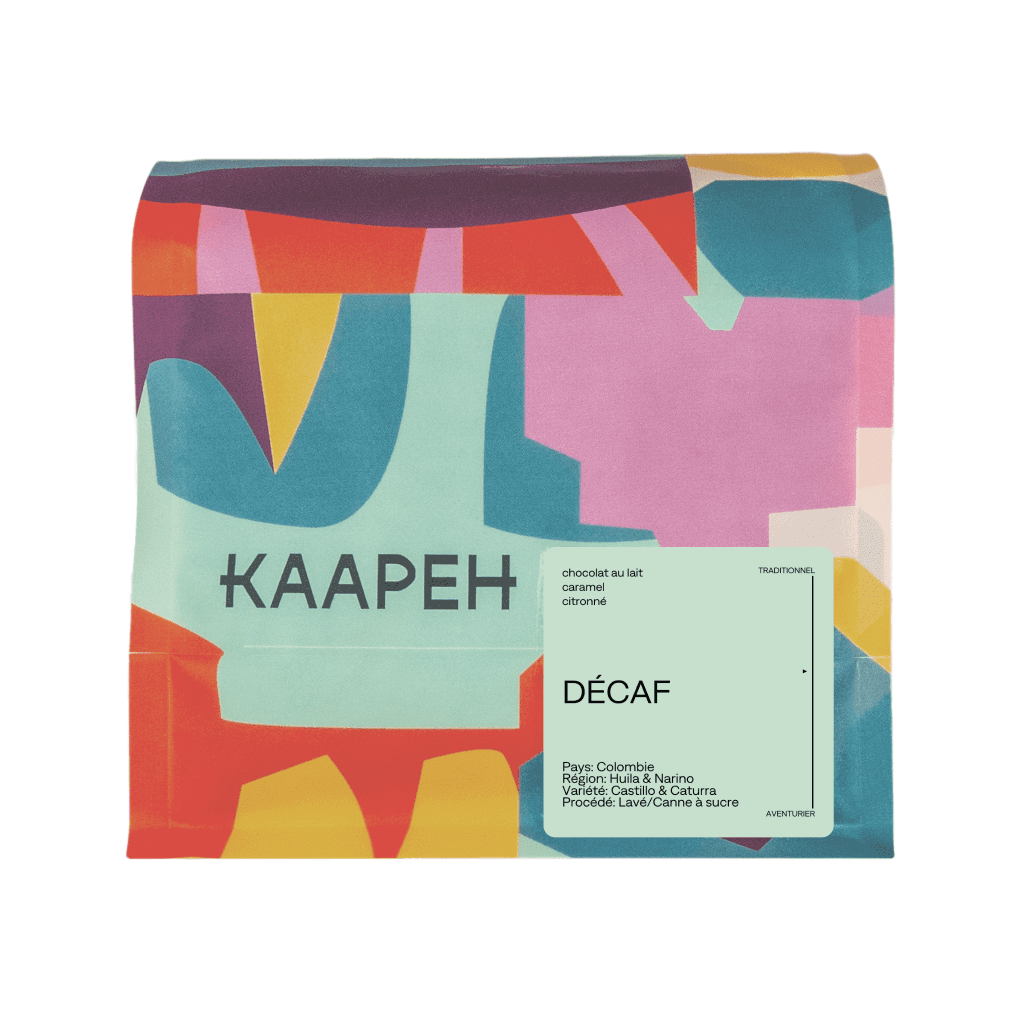Th3rdwave Directories
Cafés
Roasters
Coffees
Guides
Awards
Th3rdwave Coffee Club
Subscription
Gift subscription
Current edition
Past editions
Shop
Advent Calendar
Coffee games
Th3rdwave Wallet
Loyalty cards
Gift cards
Th3rdwave for cafés
Th3rdwave for roasters
Get free coffee
Decaf Kaapeh
This Colombian decaf coffee is made using the sugarcane method – Blend Small Producers. It was chosen because we were surprised and charmed by its delicious taste, rarely found in a decaf. With this coffee, you won't even notice it’s decaffeinated! You’ll become as addicted as we are to its flavorful notes of milk chocolate and caramel, with a hint of citrus. The decaffeination process using ethyl acetate involves fermenting a molasses made from sugarcane, blackberries, and beets to extract the ethanol generated by fermentation. This ethanol is then mixed with acetic acid, creating an ethyl acetate solution. The green coffee beans undergo a steam bath to increase their moisture content, allowing the caffeine to be extracted more efficiently. The water-saturated beans are then rinsed multiple times with the ethyl acetate solution, which dissolves the caffeine molecules. Once decaffeination is complete, the beans are washed with water and steam to remove any solution residue, then sun-dried to restore their original moisture content. This method has grown in popularity in recent years for several reasons. First, it is highly valued for its ability to preserve the coffee’s qualities while adding a sweet and complex touch. Additionally, the abundance of sugarcane in Colombia makes it an economically advantageous solution for the country’s producers.
This Colombian decaf coffee is made using the sugarcane method – Blend Small Producers. It was chosen because we were surprised and charmed by its delicious taste, rarely found in a decaf. With this coffee, you won't even notice it’s decaffeinated! You’ll become as addicted as we are to its flavorful notes of milk chocolate and caramel, with a hint of citrus. The decaffeination process using ethyl acetate involves fermenting a molasses made from sugarcane, blackberries, and beets to extract the ethanol generated by fermentation. This ethanol is then mixed with acetic acid, creating an ethyl acetate solution. The green coffee beans undergo a steam bath to increase their moisture content, allowing the caffeine to be extracted more efficiently. The water-saturated beans are then rinsed multiple times with the ethyl acetate solution, which dissolves the caffeine molecules. Once decaffeination is complete, the beans are washed with water and steam to remove any solution residue, then sun-dried to restore their original moisture content. This method has grown in popularity in recent years for several reasons. First, it is highly valued for its ability to preserve the coffee’s qualities while adding a sweet and complex touch. Additionally, the abundance of sugarcane in Colombia makes it an economically advantageous solution for the country’s producers.
Coffee origin
Country
Colombia
Region
Huila & Narino
Variety
Colombia | Castillo | Caturra
Farm
Small Producers
Process
sugarcane ethyl acetate decaffeination
Tastes like
🍫
milk chocolate
🍮
caramel
🍋🟩
lime
Community reviews
🙂




